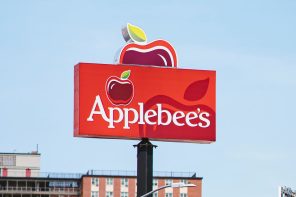As foot traffic in the U.S trickled away during the pandemic and the restaurant industry pivoted to off-premises channels, major chains lost their appetite for locations inside big-box retail stores.
Case in point: McDonald’s has been steadily scaling back its market presence inside Walmart stores. Last year, at the height of the outbreak, the burger behemoth announced plans to step up the pace of unit closures in Walmart nationally.
At the peak of the partnership with the retail giant, McDonald’s had about 1,000 restaurants in Walmart stores—a number that decreased at a gradual rate over the years, until COVID-19 made business there particularly challenging.
“The U.S. is accelerating some restaurant closures previously planned for future years. Of the 200 U.S. closures for this year, over half are low-volume restaurants in Walmart store locations,” noted McDonald’s CFO Kevin Ozan when announcing the closures.
The pandemic escalated the urgency of the burger chain’s strategy of shifting away from mall and retail store locations to drive-thru-friendly units. Ramping up that shift paid off, according to Ozan.
“The number of drive-thrus impacts the market’s pace of recovery. Markets with a higher percentage of drive-thrus are showing quicker recovery. Markets with a higher concentration of city centre and mall restaurants are seeing a heavier impact from reduced foot traffic.”
The same strategy was brewing at Starbucks, which announced last May that it would close mall-based locations as part of its migration to suburban areas with drive-thrus.
“Our digital leadership and ability to transform lower-performing locations and formats to successful new store formats (i.e., relocate Starbucks stores from low-traffic malls to new, thriving locations that combine the third place with drive-thrus) are unique strengths we will lean into in the coming months,” Starbucks CEO Kevin Johnson explained.
The coffee chain's strategy included introducing mobile order stores devoted to takeout, like the Penn Plaza location it opened in New York City in 2019.
Now that consumers have become accustomed to the ease and convenience of digital ordering and off-premises models, takeout and delivery sales will likely remain robust post-pandemic, even as in-store traffic trickles back.






